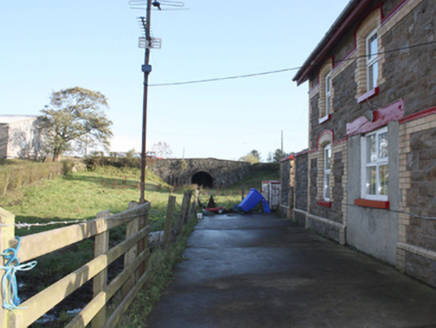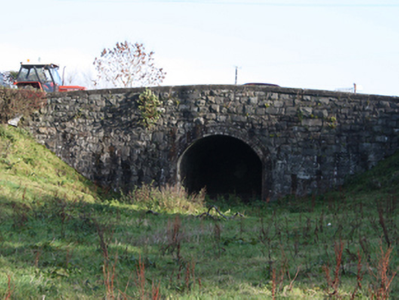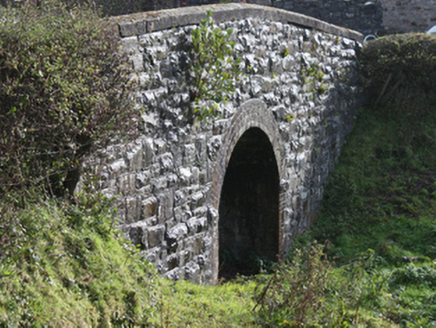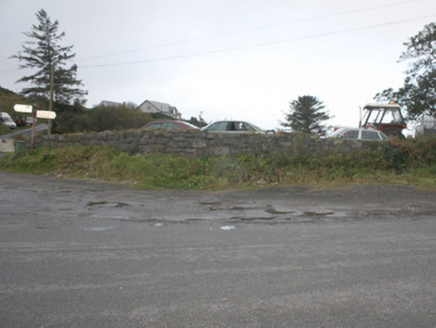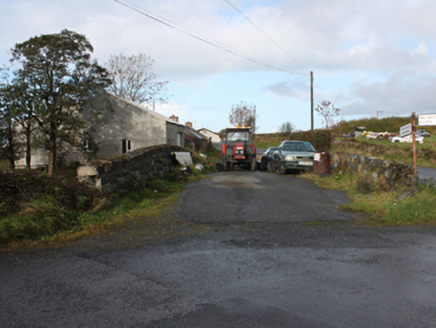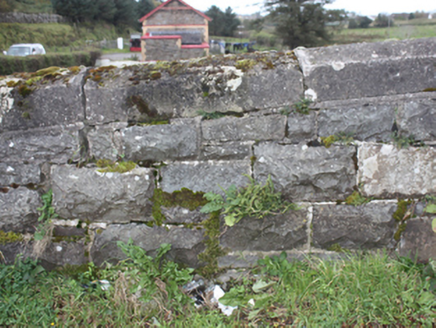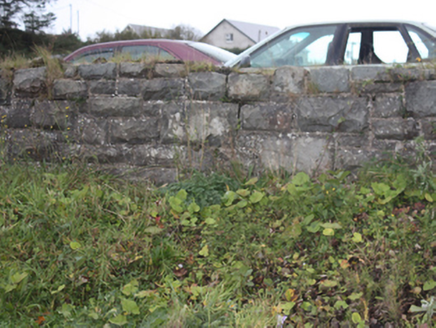Survey Data
Reg No
40902940
Rating
Regional
Categories of Special Interest
Architectural, Technical
Original Use
Bridge
Date
1895 - 1905
Coordinates
236548, 434274
Date Recorded
24/10/2008
Date Updated
--/--/--
Description
Single-arch hump-backed railway bridge, built c. 1901, carrying former road over the former Buncrana to Carndonagh section of the Londonderry to Lough Swilly Railway line. Railway line now out of use with tracks removed (c. 1935). Deck now used for storage following construction of new road to the north; arch to the north now blocked by modern road. Round-headed arch with red brick voussoirs; squared and coursed rubble stone construction to arch barrels. Snecked and squared mildly rock-faced stone construction to spandrels, abutments and to parapets with dressed stone coping over parapets. Tarmacadam deck with grass verges. Located in the rural countryside to the north-west of Buncrana, a short distance to the north of the former Ballymangan Railway Station (see 40902941).
Appraisal
This former railway bridge retains much of its original form and character despite the closure of the line in 1935 and the construction of a road to the north that has resulted in the blocking of one side of the arch. The good-quality mildly rock-faced masonry used in the construction is a typical feature of late Victorian and Edwardian railway engineering and architecture in Ireland. It survives in relatively good condition, which is testament to the quality of its original construction. It was originally built by the Londonderry & Lough Swilly Railway Company as part of the Buncrana to Carndonagh section of the Londonderry to Lough Swilly Railway line, which opened on the 1st of July 1901 and closed in December 1935. This line was an extension of an earlier railway line from Derry to Buncrana that opened in 1864. This line had a narrow gauge of three foot. This railway bridge forms part of a group of structures associated with this former narrow gauge railway line on the Inishowen Peninsula, and it is an integral element of the built heritage and transport history of County Donegal.
